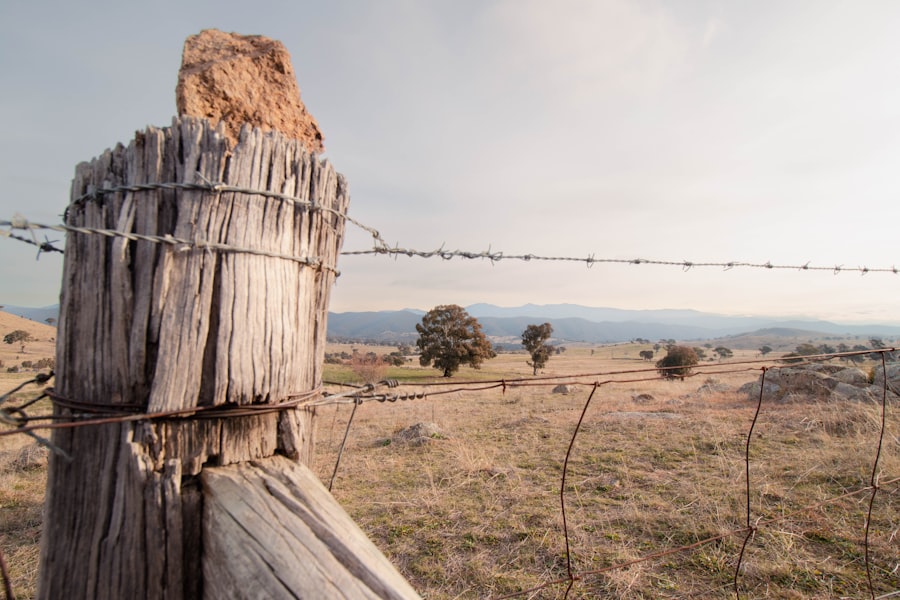The decline of rural areas has become a pressing issue in many countries, particularly in the United States and parts of Europe. This phenomenon is characterized by a gradual exodus of residents from these regions, leading to shrinking populations and abandoned properties. The reasons behind this trend are multifaceted, encompassing economic, social, and demographic factors.
As urban centers continue to grow, rural communities often find themselves at a disadvantage, struggling to compete for resources, jobs, and investment. The allure of city life, with its promise of better employment opportunities and access to amenities, has drawn many individuals away from their rural roots. Moreover, the decline of rural areas is not merely a matter of population loss; it also reflects deeper systemic issues.
Many rural communities have historically relied on industries such as agriculture and manufacturing, which have faced significant challenges in recent decades. As these industries evolve or relocate, the economic foundation of rural areas becomes increasingly fragile. This decline can lead to a vicious cycle: as jobs disappear, so do essential services, further driving residents away and leaving behind a landscape of economic despair.
Key Takeaways
- Rural areas are experiencing decline due to economic, social, and demographic factors.
- Economic challenges in rural communities include lack of job opportunities and declining industries.
- Social and demographic factors contributing to decline include aging populations and outmigration of young people.
- Government policies can have a significant impact on rural areas, both positive and negative.
- Innovative solutions for reviving rural economies include promoting entrepreneurship and sustainable agriculture, investing in education and workforce development, and leveraging technology.
Economic Challenges Faced by Rural Communities
Rural communities face a unique set of economic challenges that contribute to their decline. One of the most significant issues is the lack of job opportunities. Many rural areas have seen a reduction in traditional industries, such as farming and manufacturing, due to automation and globalization.
As companies seek to cut costs, they often relocate to urban centers where labor is more readily available and cheaper. This shift leaves rural residents with limited employment options, forcing many to seek work in distant cities or abandon their hometowns altogether. In addition to job scarcity, rural areas often grapple with lower wages compared to urban counterparts.
The jobs that do exist may not provide sufficient income to support families, leading to increased poverty rates and economic instability. Furthermore, the lack of investment in infrastructure and services exacerbates these challenges. Without access to reliable transportation, healthcare, and education, residents may find it difficult to improve their circumstances or attract new businesses to the area.
This economic stagnation creates a cycle that is hard to break, as declining populations lead to reduced consumer spending and further disinvestment.
Social and Demographic Factors Contributing to Decline

The social fabric of rural communities is also undergoing significant changes that contribute to their decline. One notable factor is the aging population in many rural areas. As younger generations migrate to urban centers for better opportunities, the demographic profile shifts towards an older population that may not have the same economic vitality or workforce participation.
This aging trend can strain local resources and services, as fewer working-age individuals are available to support the needs of an increasingly elderly community. Additionally, social isolation is a growing concern in rural areas. With fewer residents and limited social services, individuals may experience loneliness and disconnection from their communities.
This isolation can deter new residents from moving in and discourage local engagement. The lack of social infrastructure—such as community centers, recreational facilities, and cultural events—further diminishes the quality of life in these regions. As social ties weaken, the sense of community that once characterized rural life begins to erode, making it even more challenging for these areas to attract new residents or retain existing ones.
Government Policies and Their Impact on Rural Areas
| Government Policies | Impact on Rural Areas |
|---|---|
| Subsidies for Agriculture | Can help farmers in rural areas to improve productivity and income |
| Infrastructure Development | Improves connectivity and access to markets for rural communities |
| Rural Employment Schemes | Provides job opportunities and reduces migration to urban areas |
| Land Reforms | Can lead to more equitable distribution of land and resources in rural areas |
Government policies play a crucial role in shaping the future of rural communities. Historically, many policies have favored urban development over rural investment, leading to disparities in funding and resources. For instance, transportation infrastructure projects often prioritize urban areas, leaving rural roads and public transit systems underfunded and neglected.
This lack of investment can hinder economic growth by making it difficult for businesses to operate efficiently or for residents to access essential services. However, there have been efforts at various levels of government to address these imbalances. Programs aimed at revitalizing rural economies through grants, tax incentives, and infrastructure development have emerged in response to the challenges faced by these communities.
While some initiatives have shown promise in stimulating local economies, the effectiveness of government intervention often depends on local engagement and collaboration. Policymakers must work closely with rural residents to understand their unique needs and develop tailored solutions that foster sustainable growth.
Innovative Solutions for Reviving Rural Economies
Reviving rural economies requires innovative solutions that leverage local strengths while addressing existing challenges. One approach gaining traction is the promotion of local food systems and agritourism. By encouraging residents to engage in sustainable farming practices and connect with consumers directly through farmers’ markets or community-supported agriculture (CSA) programs, rural areas can create new economic opportunities while fostering community ties.
Agritourism also allows visitors to experience rural life firsthand, generating additional revenue for local businesses. Another promising avenue is the development of renewable energy projects in rural regions. Wind farms, solar installations, and bioenergy initiatives can provide new jobs while contributing to a more sustainable energy future.
By harnessing local resources and expertise, rural communities can position themselves as leaders in the green economy. These innovative solutions not only address immediate economic concerns but also promote long-term resilience by diversifying local economies and reducing dependence on traditional industries.
Importance of Infrastructure Development in Rural Areas

Infrastructure development is vital for the revitalization of rural areas. Reliable transportation networks are essential for connecting residents with job opportunities, healthcare services, and educational institutions. Without adequate roads and public transit options, individuals may find it challenging to access essential resources or participate fully in the economy.
Investing in infrastructure not only improves quality of life but also attracts businesses looking for locations with strong logistical capabilities. Moreover, access to high-speed internet has become increasingly important in today’s digital age. Many rural communities still struggle with limited connectivity, which can hinder economic growth and educational opportunities.
By expanding broadband access, residents can engage in remote work, access online education resources, and participate in e-commerce activities. This digital inclusion is crucial for bridging the gap between urban and rural areas, allowing rural communities to compete more effectively in an increasingly interconnected world.
Encouraging Entrepreneurship and Small Business Growth
Fostering entrepreneurship is another key strategy for revitalizing rural economies.
By creating supportive environments for entrepreneurs—such as access to funding, mentorship programs, and business development resources—rural areas can stimulate innovation and economic growth.
Local chambers of commerce and economic development organizations can play a pivotal role in promoting entrepreneurship by offering training programs and networking opportunities. Additionally, cultivating a culture of entrepreneurship requires collaboration among various stakeholders within the community. Schools can introduce entrepreneurship education at an early age, encouraging students to think creatively about business opportunities within their own communities.
Local governments can also support small businesses by streamlining regulations and providing incentives for startups. By fostering a vibrant entrepreneurial ecosystem, rural areas can create jobs and retain talent while enhancing their overall economic resilience.
Promoting Sustainable Agriculture and Farming Practices
Sustainable agriculture is essential for the long-term viability of rural economies. As global demand for food continues to rise, rural communities must adapt their farming practices to ensure environmental sustainability while meeting market needs. This includes adopting techniques such as crop rotation, organic farming, and agroforestry that promote soil health and biodiversity.
By prioritizing sustainable practices, farmers can enhance productivity while minimizing their ecological footprint. Furthermore, promoting local food systems can strengthen community ties while supporting local farmers. Initiatives such as farm-to-table programs encourage consumers to purchase food directly from local producers, fostering a sense of connection between farmers and their customers.
This not only boosts the local economy but also promotes healthier eating habits within the community. By investing in sustainable agriculture practices and local food systems, rural areas can create resilient economies that thrive on both environmental stewardship and community engagement.
Investing in Education and Workforce Development
Education plays a critical role in shaping the future of rural communities. Investing in education and workforce development programs is essential for equipping residents with the skills needed to thrive in an evolving job market. Collaborations between local schools, vocational training centers, and businesses can create pathways for students to gain practical experience while preparing them for high-demand careers in fields such as healthcare, technology, and renewable energy.
By prioritizing education at all levels—primary through adult—rural communities can cultivate a skilled workforce that attracts businesses while empowering individuals to achieve their personal goals. This investment not only enhances economic prospects but also fosters a culture of learning that benefits the entire community.
Leveraging Technology to Bridge the Rural-Urban Divide
Technology has the potential to bridge the gap between rural and urban areas by providing access to resources that were previously out of reach. Telemedicine services can connect residents with healthcare providers without requiring long travel distances, improving health outcomes while reducing barriers to care. Similarly, online education platforms enable students in rural areas to access high-quality learning materials and courses that may not be available locally.
Moreover, technology can facilitate remote work opportunities that allow individuals to live in rural areas while participating in global markets. As more companies embrace flexible work arrangements, rural residents can benefit from increased job options without having to relocate to urban centers. By leveraging technology effectively, rural communities can enhance their economic prospects while fostering greater connectivity with the broader world.
Building Stronger Community Networks and Support Systems
Finally, building stronger community networks is essential for addressing the challenges faced by rural areas. Local organizations—such as nonprofits, faith-based groups, and civic associations—can play a vital role in fostering social connections among residents while providing support services that meet community needs. By creating spaces for dialogue and collaboration, these organizations can help identify common goals and mobilize resources effectively.
Additionally, encouraging volunteerism within communities can strengthen social ties while addressing pressing issues such as food insecurity or access to healthcare services. When residents come together to support one another through shared initiatives or projects, they foster a sense of belonging that enhances overall community resilience. By prioritizing community engagement and support systems, rural areas can cultivate environments where individuals feel empowered to contribute positively while working towards collective goals.
In conclusion, addressing the decline of rural areas requires a multifaceted approach that encompasses economic revitalization strategies, infrastructure development, education investment, technological integration, and community engagement initiatives. By recognizing the unique challenges faced by these communities while harnessing their strengths through innovative solutions, stakeholders can work collaboratively towards building vibrant futures for rural regions across the globe.
Rural decline is a pressing issue that many communities face, characterized by population loss, economic stagnation, and reduced access to essential services. To address this challenge, innovative strategies are required to revitalize these areas and improve the quality of life for their residents. One approach is to leverage technology and geospatial data to enhance local economies and infrastructure. An insightful article on this topic can be found on MyGeoQuest, which discusses various methods to reverse rural decline by utilizing geographic information systems (GIS) and community engagement. For more information, you can read the full article by visiting this link.
WATCH NOW! Why America’s Heartland Is Disappearing Fast
FAQs
What is rural decline?
Rural decline refers to the decrease in population, economic activity, and overall vitality of rural areas. This can be due to factors such as out-migration, lack of job opportunities, and declining infrastructure.
What are the causes of rural decline?
Rural decline can be caused by a variety of factors including out-migration to urban areas, lack of job opportunities, declining agricultural industry, and inadequate infrastructure and services.
How can rural decline be reversed?
Reversing rural decline requires a multi-faceted approach that includes strategies to attract and retain residents, stimulate economic development, improve infrastructure, and support local businesses and agriculture.
What are some strategies for reversing rural decline?
Strategies for reversing rural decline may include investing in infrastructure, promoting entrepreneurship and small business development, supporting agriculture and agri-tourism, providing access to education and healthcare, and creating incentives for people to live and work in rural areas.
What are the benefits of reversing rural decline?
Reversing rural decline can lead to increased economic opportunities, improved quality of life for residents, preservation of rural culture and heritage, and a more balanced distribution of population and resources across the country.
